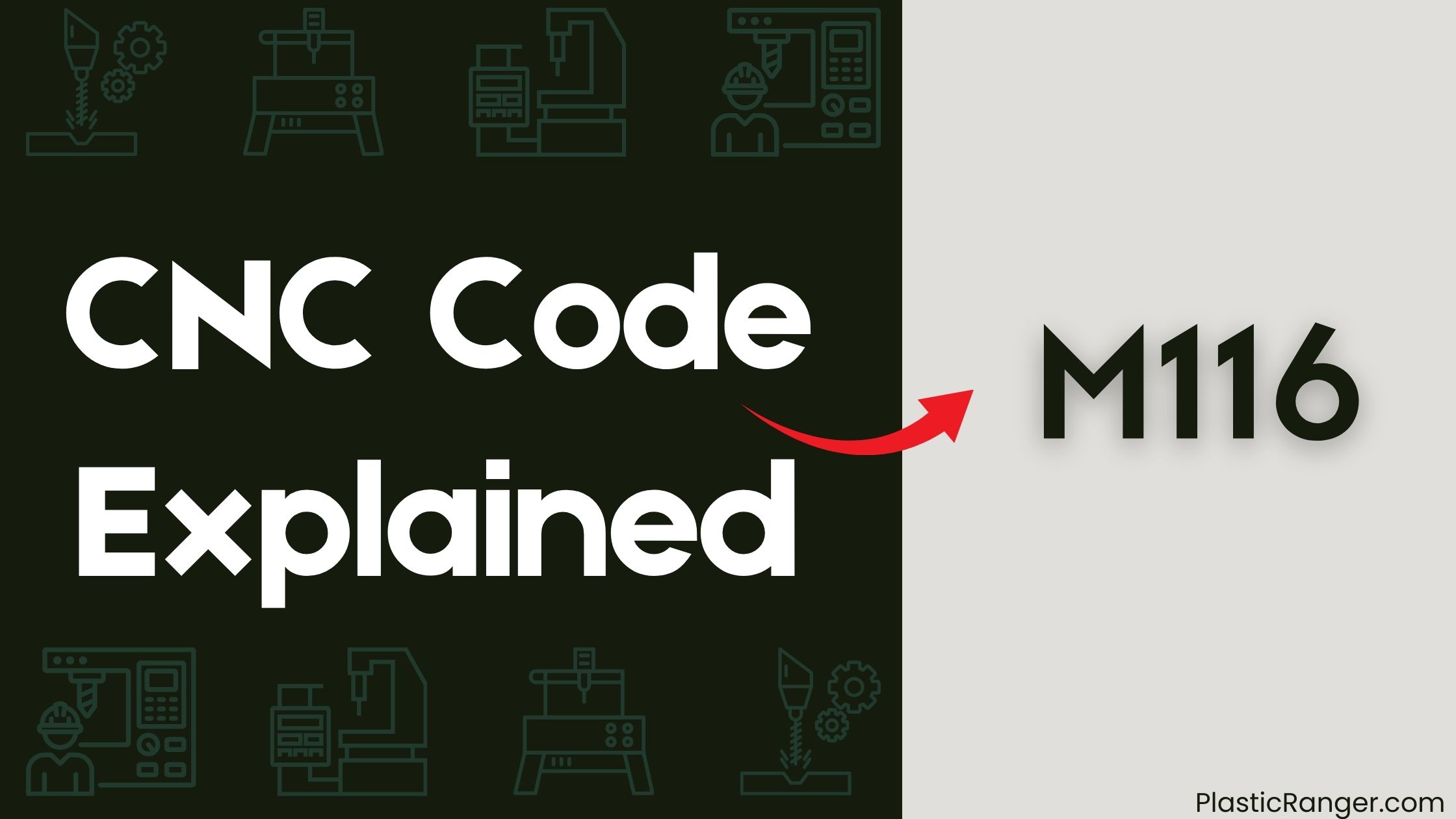Welcome to our simple guide on the M116 CNC code. Whether you are new to CNC programming or an experienced machinist, understanding the M116 code is essential.
This guide will explain everything you need to know about this unit mode command—what it is, when to use it, and why it matters.
(Step-by-step.)

Key Takeaways
- M116 CNC code is used to specify a bounding position, ensuring accurate movement in custom probing cycles.
- It enables tool change operations, allowing the CNC machine to switch to the next tool in the sequence.
- M116 is often used in conjunction with other M codes, such as M105 and M106, for axis homing and probe positioning.
- It provides interchangeability with M115 when bounding positions are provided, offering flexibility in programming.
- M116 is essential for advanced CNC programming techniques, enabling complex axis homing procedures and custom probing cycles.
Understanding M116 CNC Code
When you’re working with CNC machines, understanding the M116 CNC code is essential for efficient and accurate production.
This code plays a pivotal role in tool change operations, ensuring a seamless transition between different tools. You’ll use M116 to signal the CNC machine to perform a tool change, allowing it to switch to the next tool in the sequence.
By incorporating M116 into your programming, you can minimize downtime and maximize productivity. It’s imperative to understand the specific syntax and formatting requirements for M116, as incorrect implementation can lead to errors and delays.
Mazak M Codes Overview
Mastering Mazak M codes is essential for efficient CNC machining operations, as they enable you to control various machine functions, including tool changes, spindle rotation, and coolant activation.
Mazak M codes are standardized commands used to instruct the CNC machine to perform specific tasks. For instance, the M6 code is used to initiate a tool change, while the T code specifies the tool number to be used.
CNC Macro Programming Tips
Develop your CNC programming skills by learning how to write efficient macro programs.
When creating a macro, consider the tool changer’s movement and the M6 command, which changes the tool. Minimize tool changes by optimizing your tool sequence and using the shortest path.
Use local variables to reduce program size and improve readability. Avoid using absolute coordinates; instead, use relative coordinates to make your program more flexible.
When debugging, use print statements to track variable values and program flow. Finally, test your macro thoroughly to guarantee it runs smoothly and efficiently.
Machine Function Control Codes
Get familiar with the machine function control codes that govern your CNC machine’s operations.
These codes instruct your machine to perform specific tasks, facilitating efficient and accurate production.
In terms of machine function control, M116 is a vital code to understand.
It’s a miscellaneous machine command that moves a touch probe in custom probing cycles, specifying a bounding position to guarantee accurate movement.
You can use M116 interchangeably with M115 when bounding positions are provided, as the direction to the bounding position determines the direction of movement.
Typically, you’ll use M116 in conjunction with other M codes, such as M105 and M106, for axis homing and probe positioning.
Advanced CNC Programming Techniques
As you’ve grasped the fundamentals of machine function control codes, you’re now ready to explore into advanced CNC programming techniques that take your manufacturing capabilities to the next level.
One such technique is using the M116 code to create custom probing cycles. By specifying a bounding position, you can guarantee accurate movement and interchangeability with M115.
When combined with other M-codes like M105 and M106, M116 enables axis homing and positioning moves during probe cycles. This code is particularly useful in situations where normal M91 and M92 codes aren’t well-suited, such as complex axis homing procedures.
CNC Codes Similar to M116
| Code | Function |
|---|---|
| M115 | 5th-axis rotary table CW |
| M15 | 4th-axis rotary index table CW |
| M16 | 4th-axis rotary index table CCW |
| M17 | Indexing head index CCW |
| M94 | Attachment indexing by forward rotation |
| M95 | Attachment indexing by reverse rotation |
| M331 | 6th rotary axis CW |
| M332 | 6th rotary axis CCW |
Quick Navigation
